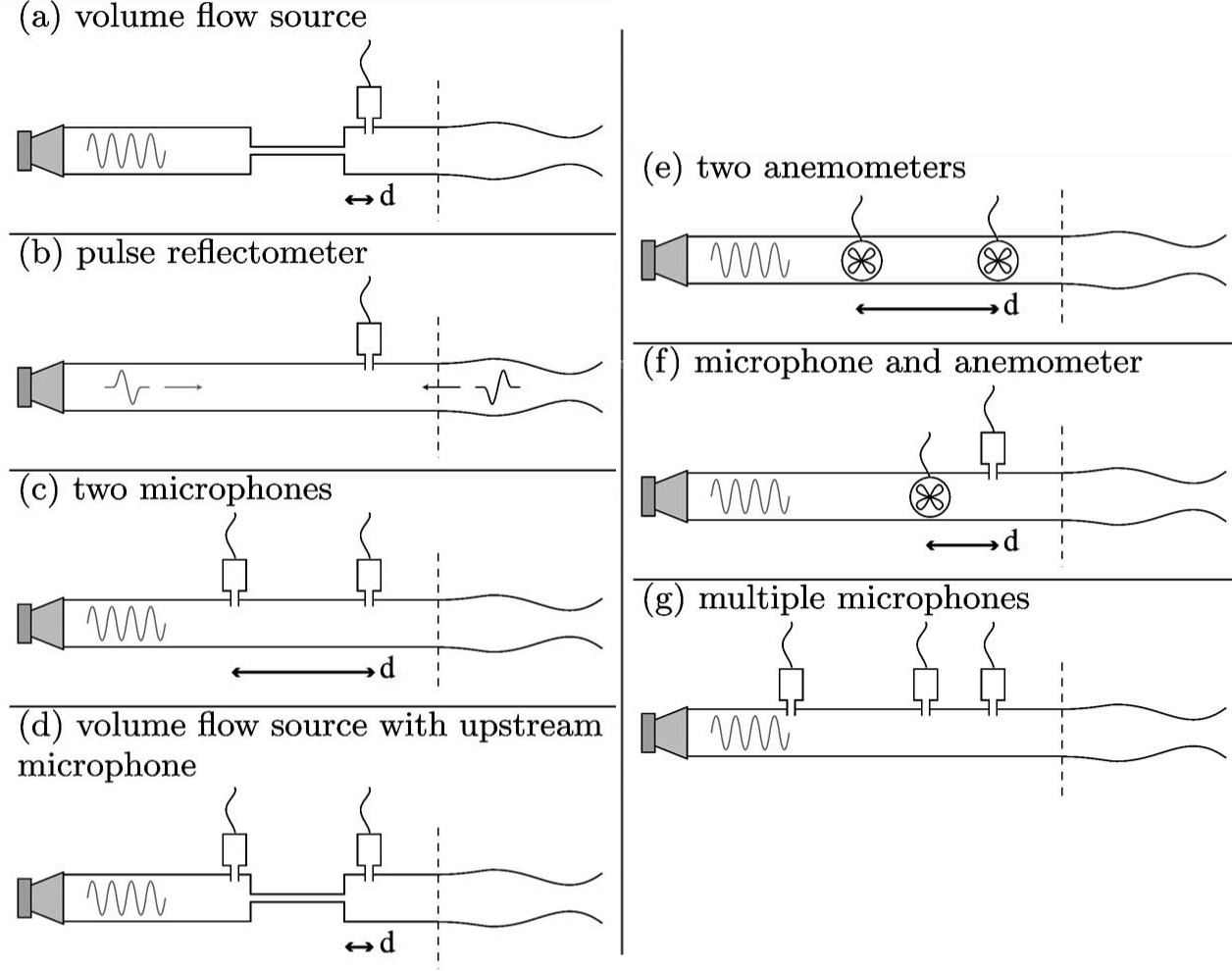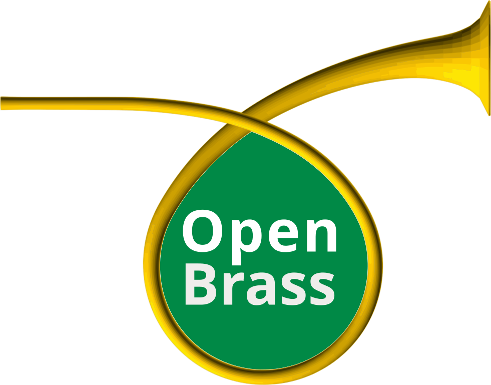Impedance sensors :
| Name / Maker | Method | Comment | Accessibility |
| BIAS: http://bias.at/ | Similar to (d) A microphone is placed before the loudspeaker, an other after. |
This sensor is designed for the study of brass-type wind instruments and comes with adapters. |
Available for sale. Price ~3000€ With software it's between 5000-8000€ (in 2016) |
| CCTM Le Mans : http://www.cttm-lemans.com/fr/acoustique-vibrations/produits/capteurs.html | Similar to (c) A piston system acts as a speaker. One microphone is placed before the piston, another after. |
Sensor initially oriented for industrial applications, it also allows the analysis of musical instruments. | Available for sale. Price ~ 10 000€ (in 2017) |
| zProbe Sensor - CAML - McGill University: http://www.music.mcgill.ca/caml/doku.php?id=projects:ir | Method (g) | Uses a multi-microphone method (theoretically more accurate) | Used only in the laboratory. |
|
OpenBrass Sensor / OB Analysis software: http://www.openbrass.org/projets_analysis_presentation.fr.htm |
Microphone on the loudspeaker put closer to the object to be measured. | Not used directly for an impedance measure in the true sense of the term but rather as a way of instrumental analysis. Thinked for price and music application. |
Do It Yourself In development, should only be around 50 € (in DIY) |
Different methods of impedance measurement:

Source : Improved precision in measurements of acoustic impedance spectra using resonance-free calibration loads and controlled error distribution - Paul Dickens, John Smith, and Joe Wolfe - School of Physics, The University of New South Wales, Sydney 2052, Australia
More details here in the source document :
https://newt.phys.unsw.edu.au/jw/reprints/DickensSmithWolfe.pdf
2 or more microphones methods are often used.
They require one or more calibrations.
Limits:
Even after calibration (study done in 2015), the CCTM sensor has a measurement bias among other low frequencies.
This is correct for the measurement of a flute but would not measure correctly a tuba for example.
It is not impossible that this will be improved in the next version of the sensor.
A correct measurement generally requires a rather restrictive protocol (good calibration, several verifications, etc ...).
An error of the manipulator can quickly cause big differences on the measurement.
The adapters (junction between the measuring head and the instrument) can also cause more or less important error (often an air leak).
There are therefore limits on the sensor side but also on the care that will take the manipulator.
Impedance measurement is for these reasons still a source of work for acousticians and we must have hindsight on the conclusions that can be drawn especially for a musical purpose.
References :
Improved precision in measurements of acoustic impedance spectra using resonance-free calibration loads and controlled error distribution
https://newt.phys.unsw.edu.au/jw/reprints/DickensSmithWolfe.pdf
Input Impedance Measurements of Conical Acoustic Systems using the Two-Microphone Technique - Antoine Lefebvre and Gary P. Scavone - 2008
http://www.music.mcgill.ca/caml/lib/exe/fetch.php?media=publications:acoustics08_lefebvre_scavone.pdf
Methods for Measuring the Acoustic Response of Wind Instruments - Alexander Buckiewicz-Smith - 2008
http://www.music.mcgill.ca/caml/lib/exe/fetch.php?media=publications:ma_buckiewicz-smith_2008.pdf
A Comparison of Impedance Measurements Using One and Two Microphones
http://www.music.mcgill.ca/caml/lib/exe/fetch.php?media=publications:isma2007_impedance.pdf
A new impedance sensor for industrial applications - Jean Christophe Le Roux, Marc Pachebat, Jean-Pierre Dalmont - 2012
https://hal.archives-ouvertes.fr/hal-00810602
Un capteur de nouvelle génération pour la mesure d’impédance acoustique en contexte industriel - Jean Christophe Le Roux, Marc Pachebat, Jean-Pierre Dalmont - 2013
https://hal.archives-ouvertes.fr/hal-00834134/
Low-cost impedance measurment:
Impedance and impulse response measurements using low‐cost components - M. I. Ibisi, A. H. Benade - 1982
http://asa.scitation.org/doi/10.1121/1.2019992
https://ccrma.stanford.edu/marl/Benade/documents/Benade-Impedance-1982.pdf
Building and using an inexpensive impedance head - Peter L. Hoekje
http://homepages.bw.edu/~phoekje/acoustics/papers/ccrmaZhead2.pdf
DESIGN AND CONSTRUCTION OF A LOW COST IMPEDANCE TUBE FOR SOUND ABSORPTION COEFFICIENTS MEASUREMENTS - 2013
http://www.abcm.org.br/anais/cobem/2013/PDF/47.pdf
DEVELOPMENT OF A LOW COST IMPEDANCE TUBE TO MEASURE ACOUSTIC ABSORPTION AND TRANSMISSION LOSS OF MATERIALS - 2014
https://peer.asee.org/development-of-a-low-cost-impedance-tube-to-measure-acoustic-absorption-and-transmission-loss-of-materials.pdf
Example of use of the CCTM sensor (calibration / confidence interval):
Page 182 - CONCEPTION D'UNE CLARINETTE LOGIQUE - Alexis Guilloteau - 2015
https://tel.archives-ouvertes.fr/tel-01518434
Texts and medias are available under the Creative Commons Attribution-ShareAlike License
